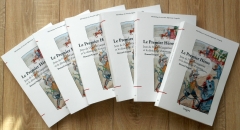The Indo-European Daughter of the Sun:
Greek Helen, Vedic Saranyu and Slavic Morana
Krešimir Vuković and Maria Mariola Glavan
Abstract : In this article the authors argue that an Indo-European parallel exists between Helen of Troy and the Slavic goddess Morana, who has in turn been proposed as being cognate to the Baltic goddesses Saulês dukterys from Lithuania, and the Latvian Saules meita, deities which have been indicated to be possible cognates to Helen as well. Parallels between Helen and the Vedic Dawn figures (Uṣas, Suryā, and Saranyu) are also examined in detail. The parallel is suggested on the basis of common elements featuring in the texts describing these divinities: genealogical background, horses, abduction, fertility, water, the golden apple, vegetation, and the swan.
Keywords : Helen of Troy, Morana, Saranyu, Slavic mythology, Vedic mythology, Greek mythology.
Résumé : Dans cet article, les auteurs soutiennent qu’il existe un parallèle indo-européen entre Hélène de Troie et la déesse slave Morana, qui à son tour a été proposée comme étant apparentée aux déesses baltes Saulês dukerys de Lituanie, et à la lettone Saules meita, divinités qui ont été signalées comme pouvant être également apparentées à Hélène. Les parallèles entre Hélène et les figures de l’aube védique (Uṣas, Suryā et Saranyu) sont également examinés en détail. Le parallèle est suggéré à partir d’éléments communs figurant dans les textes décrivant ces divinités : l’arrière-plan généalogique, les chevaux, l’enlèvement, la fertilité, l’eau, la pomme d’or, la végétation et le cygne.
Mots-clés : Hélène de Troie, Morana, Saranyu, mythologie slave, mythologie védique, mythologie grecque.
Télécharger le fichier en pdf / download in pdf: Vukovic.pdf
